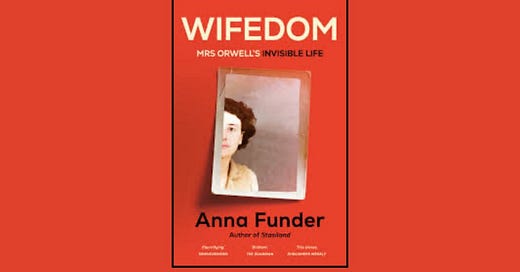Wifedom: Mrs Orwell’s Invisible Life by Anna Funder
On losing George Orwell, finding Eileen O’Shaughnessy, and making powerful narrative choices
Wifedom is a wicked magic trick we have learned to play on ourselves. I want to expose how it is done and so take its wicked, tricking power away.
Anna Funder
George Orwell has long been one of my literary heroes for his powerful dystopian narratives and searing insights into state corruption and control. I’ve read Animal Farm and 1984 numerous times, as …




